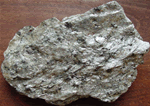
Abrakh

TRADE NAME
Mica
MOLECULAR FORMULA
2Y4-6Z8O20(OH,F)4 (in which X is K, Na, or Ca or less commonly Ba, Rb, or Cs . Y is Al, Mg or Fe or less commonly Mn, Cr, Ti, Li .Z is chiefly Si or Al but also may include Fe3+ or Ti
ABOUT
The word Mica is thought to be derived from the latin word micare, to glitter, in reference to the brilliant appearance of this mineral (especially when in small scales). Mica has a lamellar form with a shiny luster.Structurally the micas can be classed as di-octahedral (Y = 4) and tri-octahedral (Y = 6). If the X ion is K or Na the mica is a common mica whereas if the X ion is Ca the mica is classed as a brittle mica. Human use of mica dates back to pre-historic times. Mica was known to ancient Egyptian, Greek and Roman civilizations, Chinese civilization, as well as the Aztec civilization of the New World.The earliest use of mica has been found in cave paintings created during the Upper Paleolithic period (40,000 BC to 10,000 BC). The first colours were red, iron oxide (hematite, a form of red ochre) and black (manganese dioxide), though black from juniper or pine carbons has also been discovered. White from kaolin or mica was used occasionally.Throughout the ages, fine powders of mica have been used for various purposes, including decorative purposes. The coloured Gulal and Abeer used by Hindus of north India during holi festival contain fine small crystals of mica.SHODHAN OR AYURVEDA PURIFICATION PROCESS
SUGGESTED READING
Check wikipedia.org Entry for Abrakh



 Your current navigation map.
Your current navigation map.